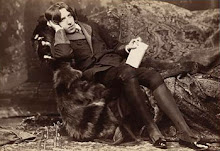 Book reference:
Book reference:"At every station there were groups of people, sometimes crowds, and in all sorts of attire. Some of them were just like the peasants at home or those I saw coming through France and Germany, with short jackets, and round hats, and home-made trousers; but others were very picturesque.
 The women looked pretty [...] They had all full white sleeves of some kind or other, and most of them had big belts with a lot of strips of something fluttering from them like the dresses in a ballet, but of course there were petticoats under them.
The women looked pretty [...] They had all full white sleeves of some kind or other, and most of them had big belts with a lot of strips of something fluttering from them like the dresses in a ballet, but of course there were petticoats under them. The strangest figures we saw were the Slovaks, who were more barbarian than the rest, with their big cow-boy hats, great baggy dirty-white trousers, white linen shirts, and enormous heavy leather belts, nearly a foot wide, all studded over with brass nails. They wore high boots, with their trousers tucked into them, and had long black hair and heavy black moustaches. They are very picturesque, but do not look prepossessing." Johnathan Harker's diary.
The strangest figures we saw were the Slovaks, who were more barbarian than the rest, with their big cow-boy hats, great baggy dirty-white trousers, white linen shirts, and enormous heavy leather belts, nearly a foot wide, all studded over with brass nails. They wore high boots, with their trousers tucked into them, and had long black hair and heavy black moustaches. They are very picturesque, but do not look prepossessing." Johnathan Harker's diary. The folkloric element is apparent in the first chapters of Dracula. Costumes, food and customs are mentioned. Can you tell the difference between Greek and Romanian traditional costumes in the photos? Hint: The hat gives away the Transylvanian folk!
The folkloric element is apparent in the first chapters of Dracula. Costumes, food and customs are mentioned. Can you tell the difference between Greek and Romanian traditional costumes in the photos? Hint: The hat gives away the Transylvanian folk!Yesterday was Easter Day and it is customary in Greece to have folklore dances in such attires.
DRACULA'S KITCHEN
 "The wine was Golden Mediasch, which produces a queer sting on the tongue, which is, however, not disagreeable." Dracula, chapter 1.
"The wine was Golden Mediasch, which produces a queer sting on the tongue, which is, however, not disagreeable." Dracula, chapter 1."This man, Johnathan, is certainly a gourmet" remarked Nancy from the Greek Reading Club. "All he is interested in writing in his diary is what dishes he tasted". Ah, yes. But the scenery gradually becomes gothic during the long hours of sinister hospitality in Count Dracula's castle.
Back at the inn, Johnathan tasted the Transylvanian cuisine. The girls from Targoviste showed us that traditional dishes remain the same from Stoker's time. Click here to see their "succulent" work.
"Αυτός ο Τζόναθαν, όλο τρώει. Δεν τον ενδιαφέρει τίποτε άλλο στο ημερολόγιό του" ήταν η αρχική αντίδραση της Νάνσυ στην Ελευσίνα. Αργότερα, θα δηλώσει ότι πράγματι η κανονικότητα του ταξιδευτή ανατρέπεται με την απίστευτη έκβαση της ιστορίας στο κάστρο του κόμη Δράκουλα. Ήταν όμως μια ευκαιρία να ζητήσουμε και να πάρουμε πληροφορίες από τις φίλες μας στην Τρανσυλβανία για την τοπική κουζίνα. Πατήστε εδώ για να δείτε πόσο λίγο άλλαξαν τα πράγματα από την εποχή που γράφτηκε το μυθιστόρημα του Στόκερ (1897)
GARLIC: drives away vampires and toothache!
"Garlic Remedy
 1 garlic clove Place a slice of peeled garlic to the affected tooth to ease the pain. Or cut a clove in half and hold one piece on each side of a tooth that is aching. A folk remedy using garlic asks for holding a peeled garlic clove in the bend of each knee. If you have delicate skin, wrap the cloves in a soft cloth. Also, loose teeth may be made tight again by rinsing the mouth morning and evening with a good strong garlic tea" More of the Romanian team's work here!
1 garlic clove Place a slice of peeled garlic to the affected tooth to ease the pain. Or cut a clove in half and hold one piece on each side of a tooth that is aching. A folk remedy using garlic asks for holding a peeled garlic clove in the bend of each knee. If you have delicate skin, wrap the cloves in a soft cloth. Also, loose teeth may be made tight again by rinsing the mouth morning and evening with a good strong garlic tea" More of the Romanian team's work here! Nancy, from the Greek team found the recipe for the ever-popular skordalia, the greek garlic sauce that drives vampires, as well as everybody else away!
Σκόρδο: Το παρεξηγημένο φάρμακο
Η ομάδα της Ρουμανίας βρήκε συνταγές ξεχασμένες για την ίαση του πονόδοντου ή τη στοματική υγιεινή με τη χρήση ωμού σκόρδου. Πατήστε εδώ. Η Νάνσυ κοινοποιεί τη συνταγή της δημοφιλέστατης στη χώρα μας σκορδαλιάς, αποτρεπτικής όχι μόνο απέθαντων, αλλά και των ζωντανών που περιστοιχίζουν όποιον τη φάει!

















2 comments:
I think that the traditional costumes have an important role in the culture of a country...although they are not as worn as before, they remain a distinctive sign for the area that represents. Denisa
I agree with Denisa.Local costumes are representative for eatch country. As vell as traditions, they expres a way of living amd the mentality of those who wear them. And... I personaly like local costumes even if nowbody wears them any more.
Catalina
Post a Comment